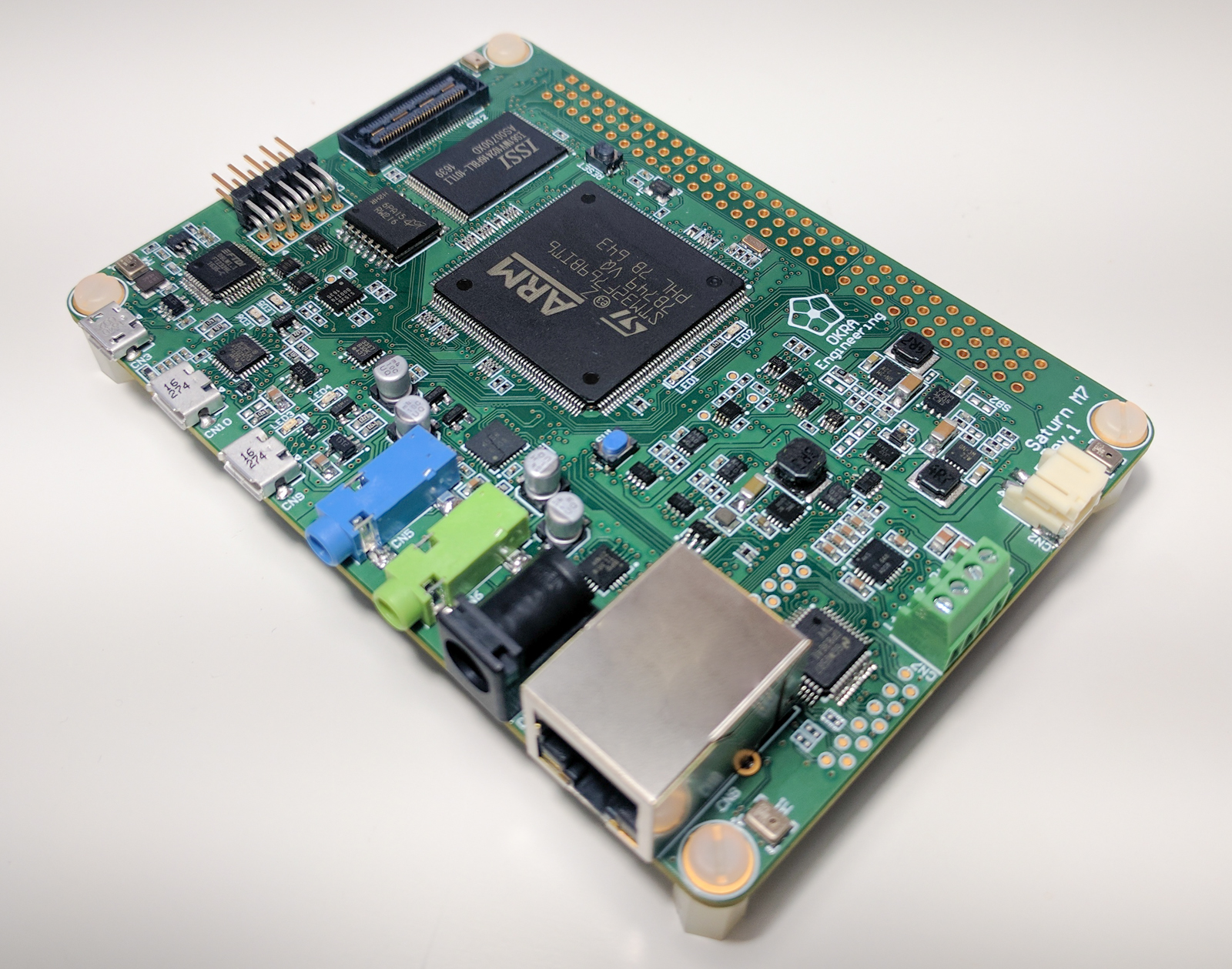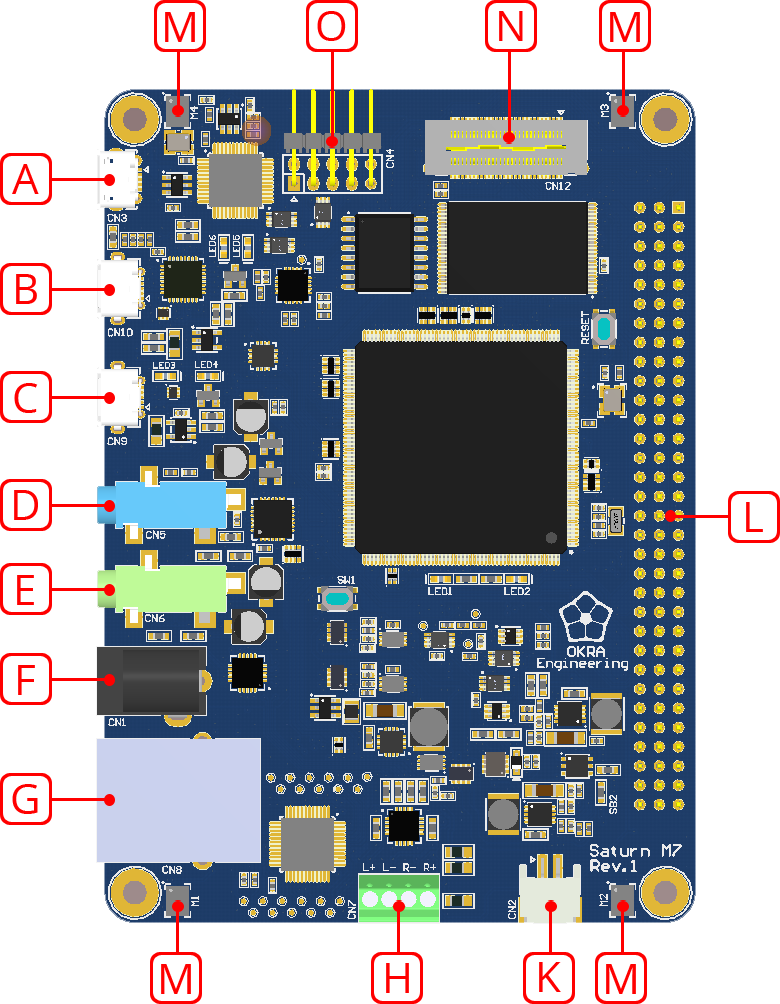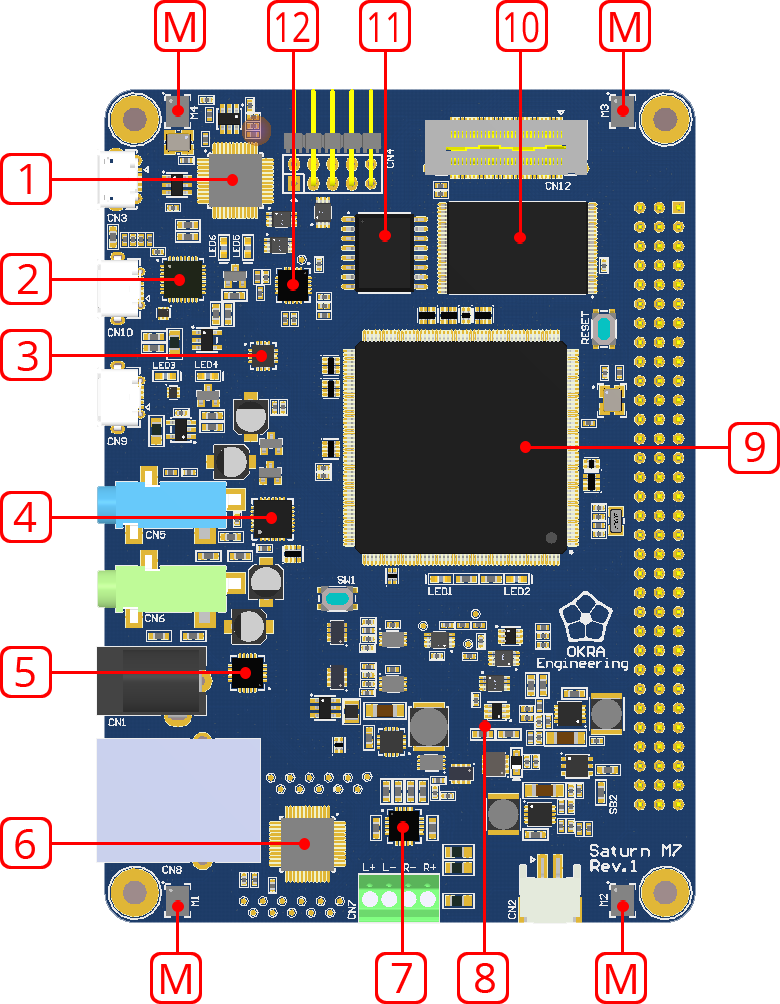Saturn M7
The Saturn M7 is an embedded audio development board designed around a STM32F7 series microcontroller by STMicroelectornics.
The microcontroller has an ARM® Cortex®-M7 core running at 216Mhz, capable of performing multimedia signal processing tasks while simultaneously managing various communication peripherals.

The board is designed to expose all the audio related peripherals available on the microcontroller, in addition to all communication peripherlas relevant to controlling the system.
The board has a high performance Delta Sigma CODEC (32bit, 216KHz, 108dB S/N) with 2 channels of input and 2 channels of output. The inputs can be captured at 16, 20, 24, and 32 bit resolution at up to 192KHz, while output resolutions of 16, 24, and 32 bit at 192KHz are supported. The CODEC has high resolution filters for superior audio quality featuring short group delays.
The board also has 4 omni-directional MEMS microphones with an acoustic overload point of 120dB SPL, a 61dB signal-to-noise ratio, and -26dB FS sensitivity. The microphones respond to frequencies between 20Hz and 10KHz. They have a flat response between 100Hz and 5KHz (±1dB).
The board has a stereo class-AB headphone amplifier capable of driving 60mW into a 16 Ohm load. It also has a stereo class-D audio amplifier capable of driving 2.1W per channel into a 4 Ohm load. Both amplifiers are connected to the CODEC’s output.
The board comes with a low jitter, 8 channel configurable clock synthesizer. It drives the audio peripherals and CODEC.
Clocks on multiple Saturn M7 boards can be synchronized down to 8ns over Ethernet through Precision Time Protocol (PTP).
The board has a 60 pin high speed header to interface with a TFT display with touch screen capability over MIPI-DSI. It also has a 96 pin header, which exposes the many digital and analog I/O pins and peripherals of the microcontroller.
The board can be powered over any of the USB ports, through a DC barrel connector, or a lithium-ion battery.
An on-board programmer and debugger is available through a USB interface, which can also be configured as a virtual COM port. The board can also interface with external programmers and debuggers.

